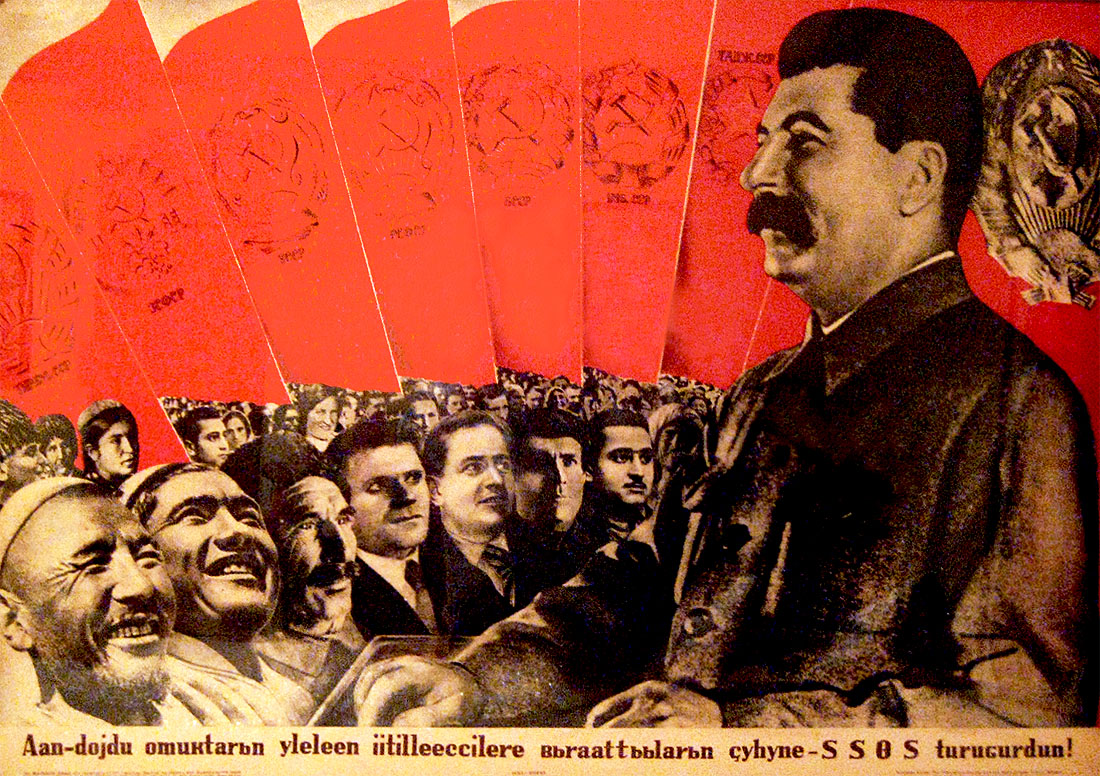
Long live the USSR, the prototype of the brotherhood of workers of all nations of the world!
Número de Cartel: PP 667
Categoría: Stalin
Tamaño: 38x28
Tipo de cartel: Litografía y Offset
Fecha de publicación: 1935
Editores: Editor Povolotskaia; Yakut Language Editor Kudrin; Technical Editor Yakovlev
Información técnica: Izogiz No. 7555; I. 32, No. 1531; Submitted for production March 5, 1935; Approved for printing March 5, 1935; Order No. 1370; Standard Format 62 x 88; Volume 1 sheet of paper; Price 42 kopeks
Ediciones: 10,000
Número de Glavlit: B-1464
En el catologo: PP 667 Stalin (framed)
Idioma: Yakuto
Artista: Klutsis, Gustav Gustavovich (Klucis, Gustavs) — Клуцис, Густав Густавович
Gustav Klutsis is considered the foremost artist of Soviet photomontage. Born in the Russian Empire near the town of modern-day Ruiena, Latvia, Klutsis attended the State Art School in Riga from 1913 to 1915 and then moved to Petrograd (St. Petersburg) prior to the October Revolution. During the revolution, he joined a volunteer rifle regiment that helped overturn the Tsarist regime. After the revolution, the artist continued his studies at OPKh (Imperial Society for the Encouragement of ...
Leer más...
Imprenta: Gudok Typography Workshop, Moscow — Типография Гудок, Москва
Gudok is the Russian word for whistle and it was also the name given to the railway industry newspaper in the Soviet Union. The newspaper's printing workshop was in Moscow at 7 Stankevich Street (formerly Voznesenskii Lane), a street named after Alexander Stankevich (1821-1912), the Russian writer, biographer and publisher. From the end of the nineteenth century until 1918, the location served as the printing house and editorial offices of the liberal newspaper "Russian News" (...
Leer más...
Editorial: Ogiz-IzoGiz, Moscow-Leningrad — Огиз-Изогиз, Москва-Ленинград
Ogiz was the Association of the State Book and Magazine Publishers. Its main offices were located in Moscow and in Leningrad. The Sovnarkom of the Russian Socialist Federative Soviet Republic established Ogiz in 1930 to centralize publishing activities under a state monopoly in order to eliminate duplication of printed material, streamline and control publishing production and output, and to create a base for marketing books, training and technical manuals. In 1931, the Central Committee of the USSR ...
Leer más...